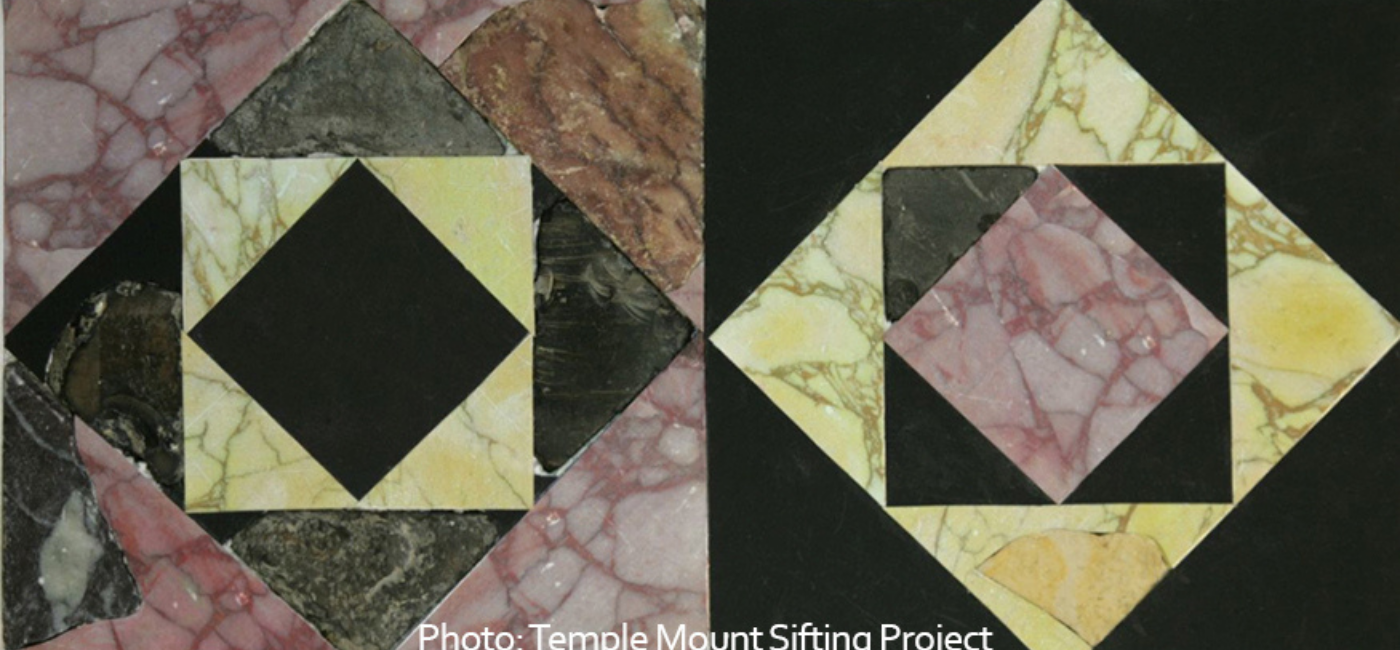
Stonings in the Temple?
October 4, 2016
In Acts 5, there is an intriguing story about the re-arrest of the apostles after they had been miraculously delivered from prison (vv. 19-20). In obedience to angelic command, they entered the temple to resume their preaching and teaching (v. 21). Soon, word got back to the High Priest and the Sadducees, “…someone came and reported to them, ‘Behold, the men whom you put in prison are standing in the temple and teaching the people!’ Then the captain went along with the officers and proceeded to bring them back without violence (for they were afraid of the people, lest they should be stoned)” (vv. 25-26, NASB).
“They did not use force, because they feared that the people would stone them” (NIV). This is said in comparison to the previous arrest, when they “laid the hands upon the apostles” (v. 18). They avoided the use of violence because they feared reprisal from the crowd. This is a powerful testimony to the high regard in which the new movement was held by the inhabitants of Jerusalem and the surrounding region. Such an exhibition of solidarity also strongly argues for the “Jewishness” of Christianity — its continuity with the ancient faith of Judaism.
Some might question the historical accuracy of this report because the arrest takes place in the temple. This event did not occur on the Judean hillside, where rocks for stoning are always plentiful. Rather, it took place inside Herod’s temple. There, the floor was beautifully paved with colorful imported stone from places as far away as Egypt, Tunisia, Asia Minor, and even Rome.
As a part of the most complete description of the temple we have, the first-century Jewish historian Josephus Flavius tells us, “The open court was from end to end variegated with paving of all manner of stones" (History of the Jewish War 5:192; see also 6:85, 189; Mishnah Yoma 1:7; War 7:290 describes the floors of Masada in much the same way; see also the rabbinic description in the Babylonian Talmud Bava Batra 4a). These ancient literary descriptions were confirmed by Israeli archeologists Gabriel Barkay and Zachi Dvira just a few weeks ago on the website of the Israeli publication HaAretz.
So why would the temple guard have “feared that the people would stone them” (NIV)? This problem is only compounded by the claim in the Gospel of John that Jesus also faced death by stoning in the temple twice (John 8:59; 10:31)! Is it possible that these reports by Luke and John are, as more liberal interpreters have claimed for the last century and a half, merely literary creations? Are they correct in their assertions that the Gospels were written without access to eyewitness reports and that historical inaccuracies such as this are the inevitable result?
The reality is that the same Josephus who complicated the situation by his description of a paved temple floor also provides information that resolves the seeming conflict between historical reality and the biblical accounts. In the same work, Josephus recounts an event in which Jewish rioters stoned various groups sent by Archelaus (who ruled from 4 BC to AD 6; see Matthew 2:22) who had entered the temple to reason with them (History of the Jewish War 2:9; similar accounts of stonings in the temple can be found in 2:11-12, 223-225 and Antiquities of the Jews 17:216 and 259). Evidently, even after the death of Herod, the temple remained under construction, and there was always plenty of rubble from demolition as well as materials for reconstruction that could be turned into projectiles whenever the need arose.
Another text confirms this reality: the Gospel of John records a statement made by some Jews who took issue with Jesus’ claim that He would rise from the dead in three days, "It took forty-six years to build this temple, and will You raise it up in three days?" (John 2:20, NASB). It appears that, like Rome, the temple in Jerusalem was also “not built in a day”! In fact, Josephus tells us that the temple complex remained under construction until AD 63, when it was completed, not by Herod the Great, but during the reign of his grandson, King Agrippa II (Antiquities of the Jews 20:219). This statement, in turn, was confirmed in 2011 by archeologist Eli Shukron (who regularly serves as one CHLS’s Israeli guides who accompanies us on study trips to Israel). On the basis of pottery and coin evidence, he was able to demonstrate that the area around the Western Wall (sometimes referred to incorrectly as the “Wailing Wall”) was completed long after the death of Herod the Great in 4 BC (“Building the Western Wall: Herod began it but didn't finish it,” posted November 23, 2011).
What then are the conclusions that can be made on the basis of the evidence?
1) The temple floor was indeed paved, and according to ancient literature and recent archeological discovery, this was done in the grandest fashion.
2) This reality does not conflict with the claims by Luke and John that stoning was still a possibility within the temple.
3) This is because, as again demonstrated by the ancient sources and recent archeological discovery, the temple was under constant renovation throughout the lifetime of Jesus and throughout much of the ministry of His apostles. This, in turn, provided ample materials to make stoning in the temple a real possibility.
4) Most importantly, work of the Gospel writers is again seen to accurately reflect historical reality. Therefore, as followers of Jesus, we can trust these documents that serve as the foundations of our faith. In fact, as we engage in careful study of our own sacred literature, our confidence in it increases as it so often does when studying on-site in Israel, when “faith becomes sight”!*
Note: We at the CHLS are especially proud of the work by Gabriel Barkay, because a number of the CHLS instructional staff studied under him as students in Israel. In addition, he is one of the regular lecturers CHLS brings to groups who participate in the CHLS study trips in Israel.
*The substance of this article has been excerpted from the author’s The Book of Acts. The question of executions in the temple will be taken up in a subsequent article.
“They did not use force, because they feared that the people would stone them” (NIV). This is said in comparison to the previous arrest, when they “laid the hands upon the apostles” (v. 18). They avoided the use of violence because they feared reprisal from the crowd. This is a powerful testimony to the high regard in which the new movement was held by the inhabitants of Jerusalem and the surrounding region. Such an exhibition of solidarity also strongly argues for the “Jewishness” of Christianity — its continuity with the ancient faith of Judaism.
Some might question the historical accuracy of this report because the arrest takes place in the temple. This event did not occur on the Judean hillside, where rocks for stoning are always plentiful. Rather, it took place inside Herod’s temple. There, the floor was beautifully paved with colorful imported stone from places as far away as Egypt, Tunisia, Asia Minor, and even Rome.
As a part of the most complete description of the temple we have, the first-century Jewish historian Josephus Flavius tells us, “The open court was from end to end variegated with paving of all manner of stones" (History of the Jewish War 5:192; see also 6:85, 189; Mishnah Yoma 1:7; War 7:290 describes the floors of Masada in much the same way; see also the rabbinic description in the Babylonian Talmud Bava Batra 4a). These ancient literary descriptions were confirmed by Israeli archeologists Gabriel Barkay and Zachi Dvira just a few weeks ago on the website of the Israeli publication HaAretz.
So why would the temple guard have “feared that the people would stone them” (NIV)? This problem is only compounded by the claim in the Gospel of John that Jesus also faced death by stoning in the temple twice (John 8:59; 10:31)! Is it possible that these reports by Luke and John are, as more liberal interpreters have claimed for the last century and a half, merely literary creations? Are they correct in their assertions that the Gospels were written without access to eyewitness reports and that historical inaccuracies such as this are the inevitable result?
The reality is that the same Josephus who complicated the situation by his description of a paved temple floor also provides information that resolves the seeming conflict between historical reality and the biblical accounts. In the same work, Josephus recounts an event in which Jewish rioters stoned various groups sent by Archelaus (who ruled from 4 BC to AD 6; see Matthew 2:22) who had entered the temple to reason with them (History of the Jewish War 2:9; similar accounts of stonings in the temple can be found in 2:11-12, 223-225 and Antiquities of the Jews 17:216 and 259). Evidently, even after the death of Herod, the temple remained under construction, and there was always plenty of rubble from demolition as well as materials for reconstruction that could be turned into projectiles whenever the need arose.
Another text confirms this reality: the Gospel of John records a statement made by some Jews who took issue with Jesus’ claim that He would rise from the dead in three days, "It took forty-six years to build this temple, and will You raise it up in three days?" (John 2:20, NASB). It appears that, like Rome, the temple in Jerusalem was also “not built in a day”! In fact, Josephus tells us that the temple complex remained under construction until AD 63, when it was completed, not by Herod the Great, but during the reign of his grandson, King Agrippa II (Antiquities of the Jews 20:219). This statement, in turn, was confirmed in 2011 by archeologist Eli Shukron (who regularly serves as one CHLS’s Israeli guides who accompanies us on study trips to Israel). On the basis of pottery and coin evidence, he was able to demonstrate that the area around the Western Wall (sometimes referred to incorrectly as the “Wailing Wall”) was completed long after the death of Herod the Great in 4 BC (“Building the Western Wall: Herod began it but didn't finish it,” posted November 23, 2011).
What then are the conclusions that can be made on the basis of the evidence?
1) The temple floor was indeed paved, and according to ancient literature and recent archeological discovery, this was done in the grandest fashion.
2) This reality does not conflict with the claims by Luke and John that stoning was still a possibility within the temple.
3) This is because, as again demonstrated by the ancient sources and recent archeological discovery, the temple was under constant renovation throughout the lifetime of Jesus and throughout much of the ministry of His apostles. This, in turn, provided ample materials to make stoning in the temple a real possibility.
4) Most importantly, work of the Gospel writers is again seen to accurately reflect historical reality. Therefore, as followers of Jesus, we can trust these documents that serve as the foundations of our faith. In fact, as we engage in careful study of our own sacred literature, our confidence in it increases as it so often does when studying on-site in Israel, when “faith becomes sight”!*
Note: We at the CHLS are especially proud of the work by Gabriel Barkay, because a number of the CHLS instructional staff studied under him as students in Israel. In addition, he is one of the regular lecturers CHLS brings to groups who participate in the CHLS study trips in Israel.
*The substance of this article has been excerpted from the author’s The Book of Acts. The question of executions in the temple will be taken up in a subsequent article.
Posted In Archaeology Israel Devotional
